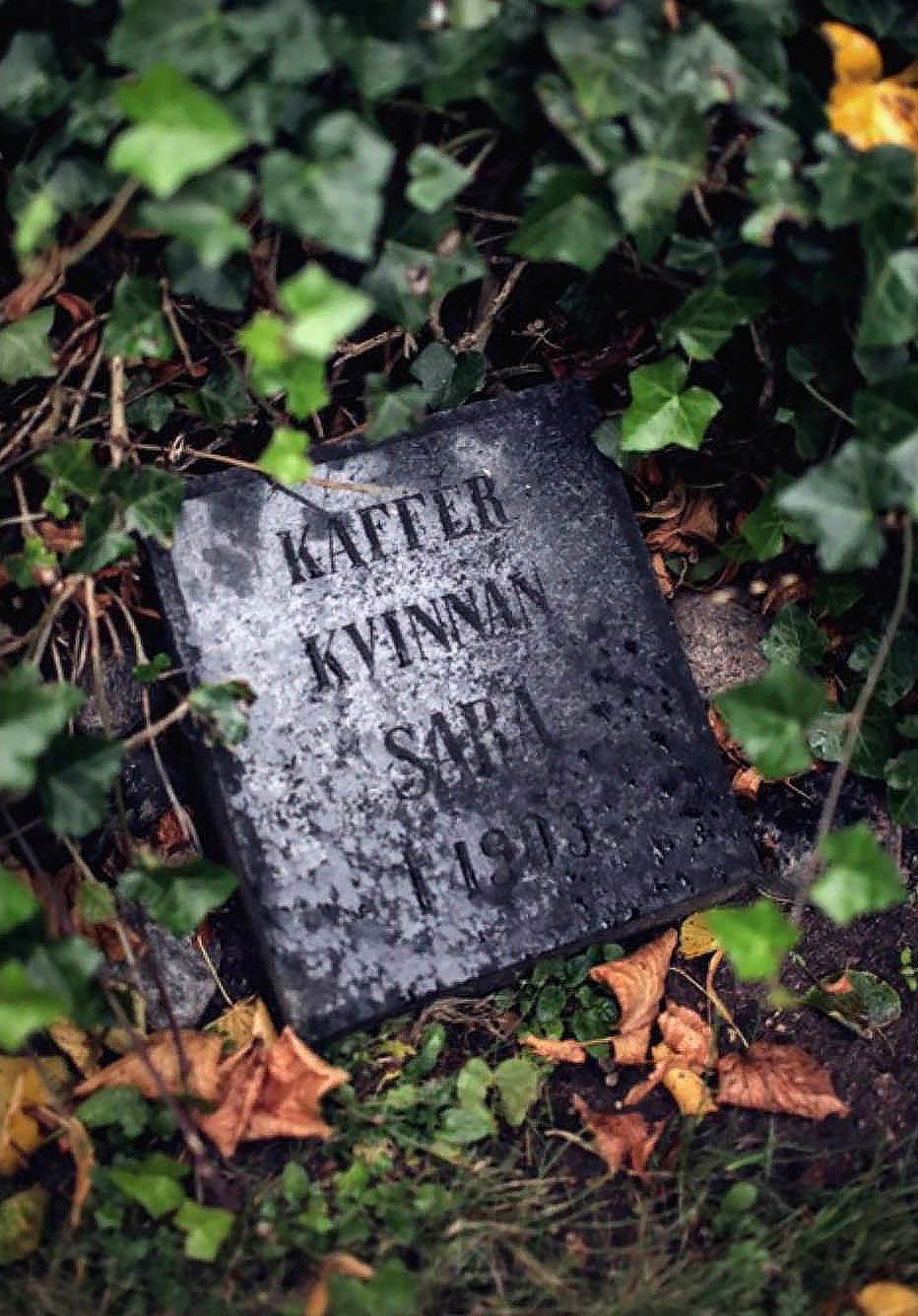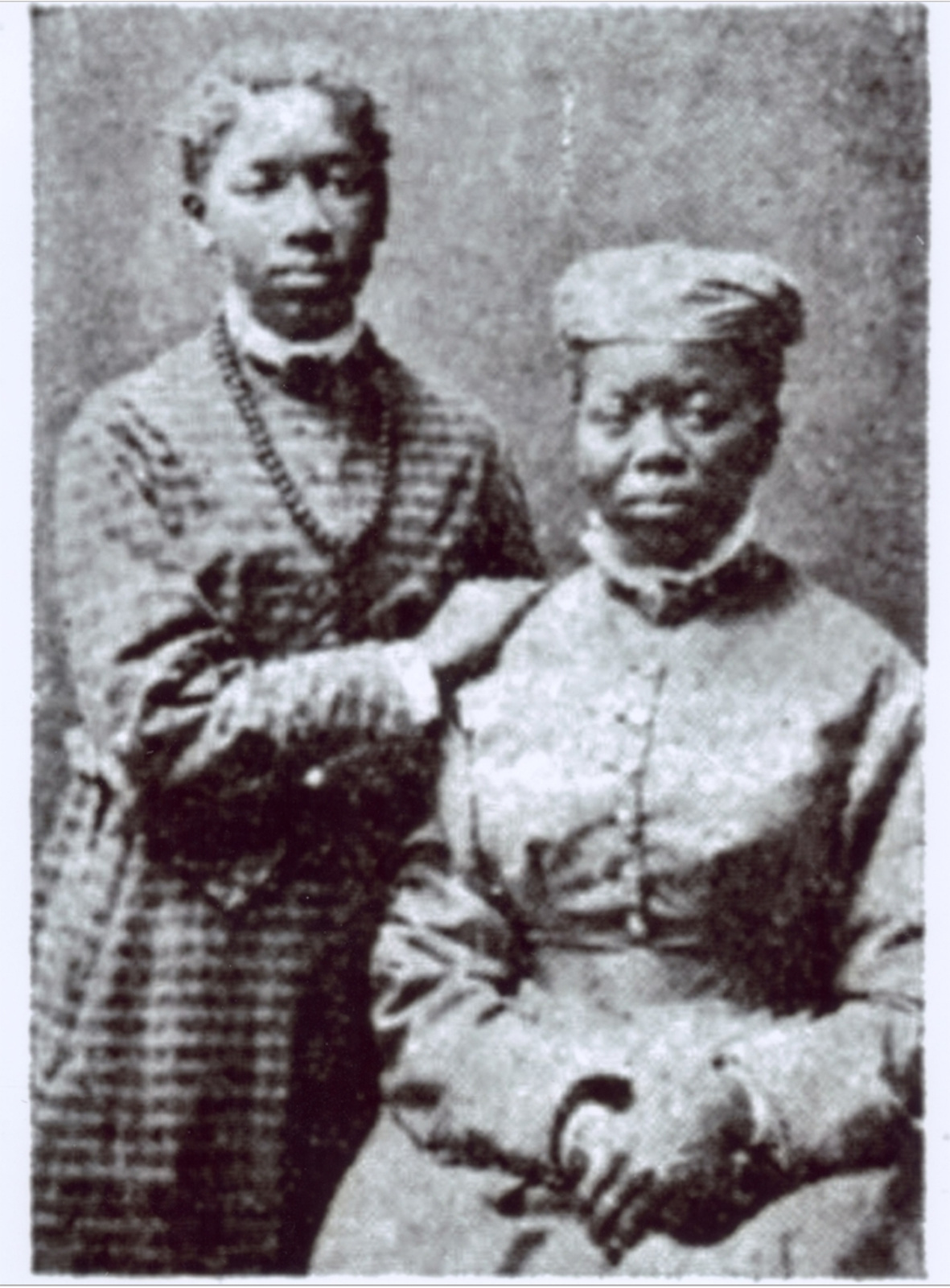Lifes twists: Sara Makatamela was captured and sold as a slave. She ended up working for the Forssman family as a maid.
‘Kaffer woman Sara. 1903.”
These are the words engraved on a tombstone in a cemetery in Kalmar, a small town in southern Sweden.

Who was Mazhar “Sara” Makatemele and how did she end up in Sweden?
Makatemele was the first black woman to live in the town. The sepia and black-and-white photographs of Makatemele, elegantly dressed according to the fashion at the time, are believed to be the first photos of a black woman in Swedish history.
Makatemele was born in 1846 in KwaZulu-Natal. In the mid-1850s, slave hunters plundered her village. Makatemele and her family fled and hid in a nearby cave. Her brother was found and beaten to death but Makatemele survived after being shot. The slave hunters killed, injured and displaced many of Makatemele’s family members. Those who survived were taken as slaves.
Makatemele was sold and bought several times before ending up with the Swedish settler Alarik Forssman and his family.
The entrepreneurial Forssman had come to South Africa to develop a Swedish agriculture colony, which he call Skandinavia. With state-funding, military force and the help of his surveyor and cartographer brother, Forssman would amass land and become the biggest landowner in the Transvaal. But little is written about his involvement in the colonisation of land in the Potchefstroom area.
Makateleme worked as a maid for Forssman’s family. When the family decided to return to Sweden, Makatemele was given the choice of going with them. The 16-year-old, who was pregnant by a fellow African, and another black teenager, Dina Maria (15), decided to go with the Forssmans by ship to Sweden. This would be the last time Makatemele would see African soil.

Sara Makatemele boarded the Octavia and sailed to Sweden when she was 16 years old
The ship arrived at Kalmar in 1862. When they docked, there was a commotion as people, who had never seen a black person before, ran to the harbour to look at Makatemele and Dina Maria.
According to historians, bringing the two black people to Sweden was a marketing strategy to attract Swedish workers to South Africa to help to develop Forssman’s colony.
Makatemele and Dina Maria were in Kalmar for a few months before Forssman returned to South Africa. Makatemele chose to stay in Sweden, but Dina Maria decided to go home.
Makatemele was given the nickname Svarta Sara, Black Sara. Shortly after arriving in Kalmar, Makatemele gave birth to a girl. She then went to work as a maid for Cecilia Fryxell, a missionary and teacher, who encouraged the education of girls and who ran an all-girls school called Rostad.
The two became close friends and Makatemele named her daughter Emmelie after Fryxell, although everybody called the girl Millan.

In 1862, the pregnant Sara went with Alarik Forssman to Sweden where she gave birth to her daughter Millan
Millan lived with Fryxell but maintained a close relationship with her mother. She excelled in school, achieving the highest grades among her peers and, over time, became a music teacher who gave piano lessons. Millan was also a skilled seamstress.
“People in Kalmar liked [Sara] Makatemele. She was perceived as a nice and happy person; however, it seems like she also had quite a temper,” says historian and author Per Anderö, who has done extensive research about Makatemele for his recently published book: Mazahr Makatameles liv i 1800-talets Sydafrika och Kalmar.
“Sara used to wear some type of head wrap or turban that some of the girls at Rostad would pull off of her head. This would make her very angry, which the girls found very funny.
“One can definitely say that Sara was subjected to some mockery, but it is difficult to say whether it was due to discrimination because of her skin colour. But of course, this really depends on Sara’s experience … and that we don’t know,” says Anderö.
It is said that the acclaimed Swedish songwriter Lina Sandell-Berg (1832-1903) was inspired by Makatemele when she wrote one of her most popular hymns, Lilla Svarta Sarah (Little Black Sarah). The hymn tells the story of a “poor Negro child” whose black skin colour turns white and pure once the child dies.
There are nearly 300 000 people of African descent living in Sweden today. Growing up among those 3%, When I reflect on Makatemele, I imagine she must have felt lonely in Sweden back in the 1860s. Although history suggests that Makatemele lived a decent life in Sweden, separation from her family, cultural isolation, slave trauma and being a single mother must have been challenging.
In 1903, Makatemele died from complications from pneumonia. Millan died in 1900, before the age of 40. Neither women married and Millen did not have a child, leaving further details about their lives vague.
Nonetheless, the women are far from forgotten in Kalmar. A few times a year, pupils from a local high school host a “cemetery theatre” in which they retell the (slightly fictionalised) history of Kalmar by highlighting significant people in the city’s burial grounds. The story about Makatemele is always popular with spectators.
Throughout the years, many visitors have wanted to see the tombstone of the first black woman to have lived in Kalmar. But many are shocked when they read the words on Makatemele’s tiny, worn gravestone in dark granite, which is almost completely covered in ivy; “Kaffer woman Sara. 1903”. It is not known why these words were chosen — whether she chose them herself or they were engraved without her consent. But, in transcribed texts, Makatemele refers to herself as a “kaffer” from “kaffer land.”
On Milla’s tombstone it says: “Music teacher. Millan Boy. 1900.”
Textile designer Nkuli Mlangeni, who was an artist-in-residence at the Deep Memory Exhibition at the Kalmar Art Museum in 2017, says:
“When I first heard that there was a South African black woman in Kalmar in the 1900s, my immediate reaction was fascination. But when I went to see the grave, everything shifted. Seeing that her grave still had that word ‘kaffer’ was the biggest shock ever,” says Mlangeni.
She and other artists at the Deep Memory Exhibition were so upset about the text on Makatemele’s tombstone that they appealed to the church responsible for administrating Makatemele’s tombstone to rethink the wording and the narrative about her life.
“I think that the gravestone has got to go,” says Mlangeni. “But the feedback we got was that, in Sweden, the word doesn’t mean anything and that people do not understand what it means.
“That response to me is similar to Swedish people not understanding that putting a H&M sweater that says ‘monkey’ on a black child is not going to cause problems. Come on, do your research,” says Mlangeni.
The k-word is not generally known in Sweden; instead the n-word is used as a derogatory term.
When I met Mlangeni at Makatemele’s grave on a freezing winter day earlier this year, she spoke about the reverence that South Africans feel towards their ancestors. She reiterated the significance that Makatemele, as a lost South African daughter, should somehow be brought back home, either through her story or her remains be taken for reburial. Mlangeni believes that Makatemele’s misplaced soul should be reunited with her people.
Thanks to Mlangeni and fellow artist Breeze Yoko, museum director Joanna Sandell, myself and others, the authorities decided in May to erect a plaque next to Makatemele’s grave.
The text describes who Makatemele was, how she came to live in Kalmar and gives context to the word “kaffer”.
In Sweden, in contrast to South Africa, the debate about racist or problematic monuments is young. According to the Swedish Heritage Act, it is illegal to alter or remove the formulation of a tombstone erected before 1939.
Although the text on Makatemele’s gravestone remains, I hope that bringing her soul’s story home will give Makatemele some form of reparation.